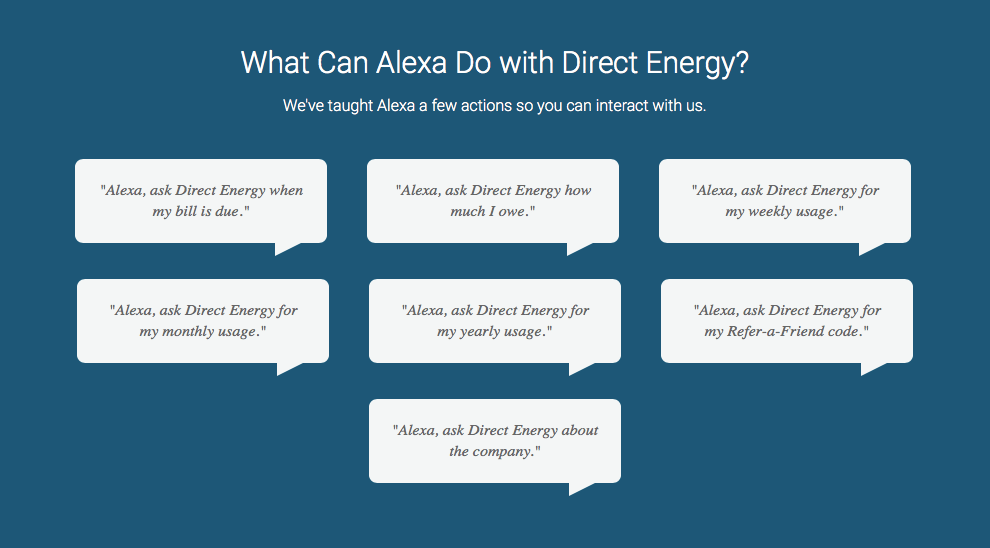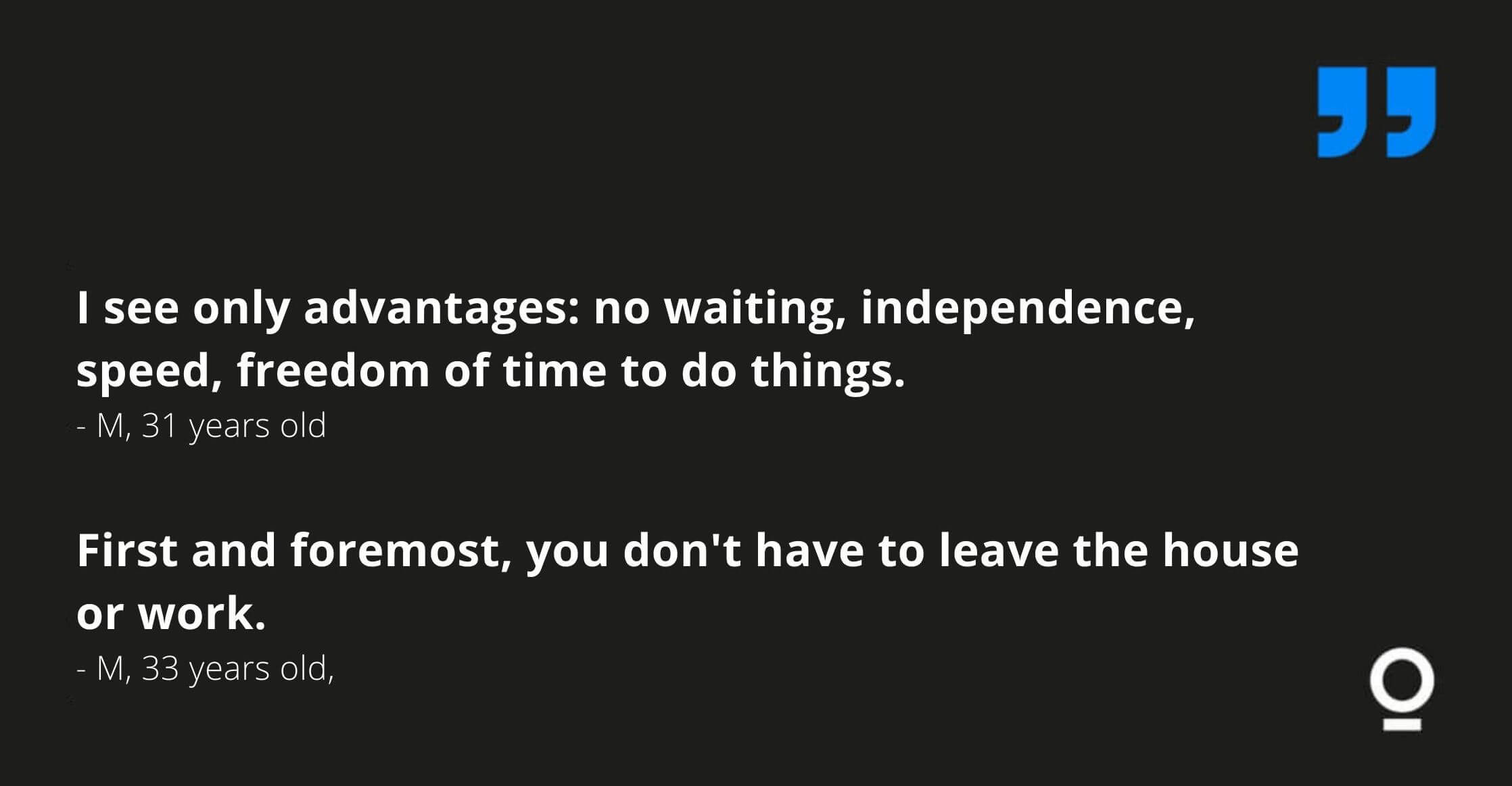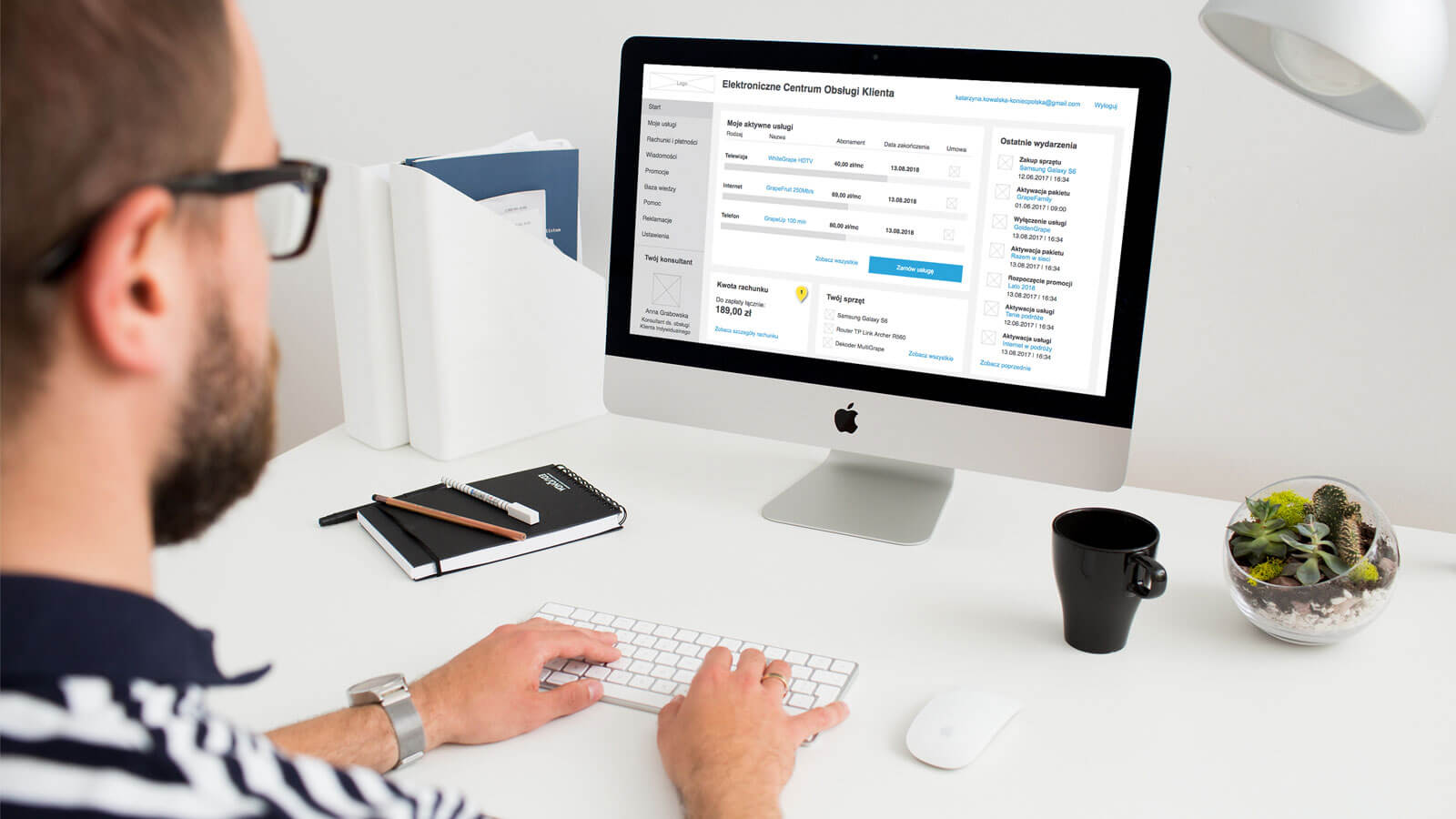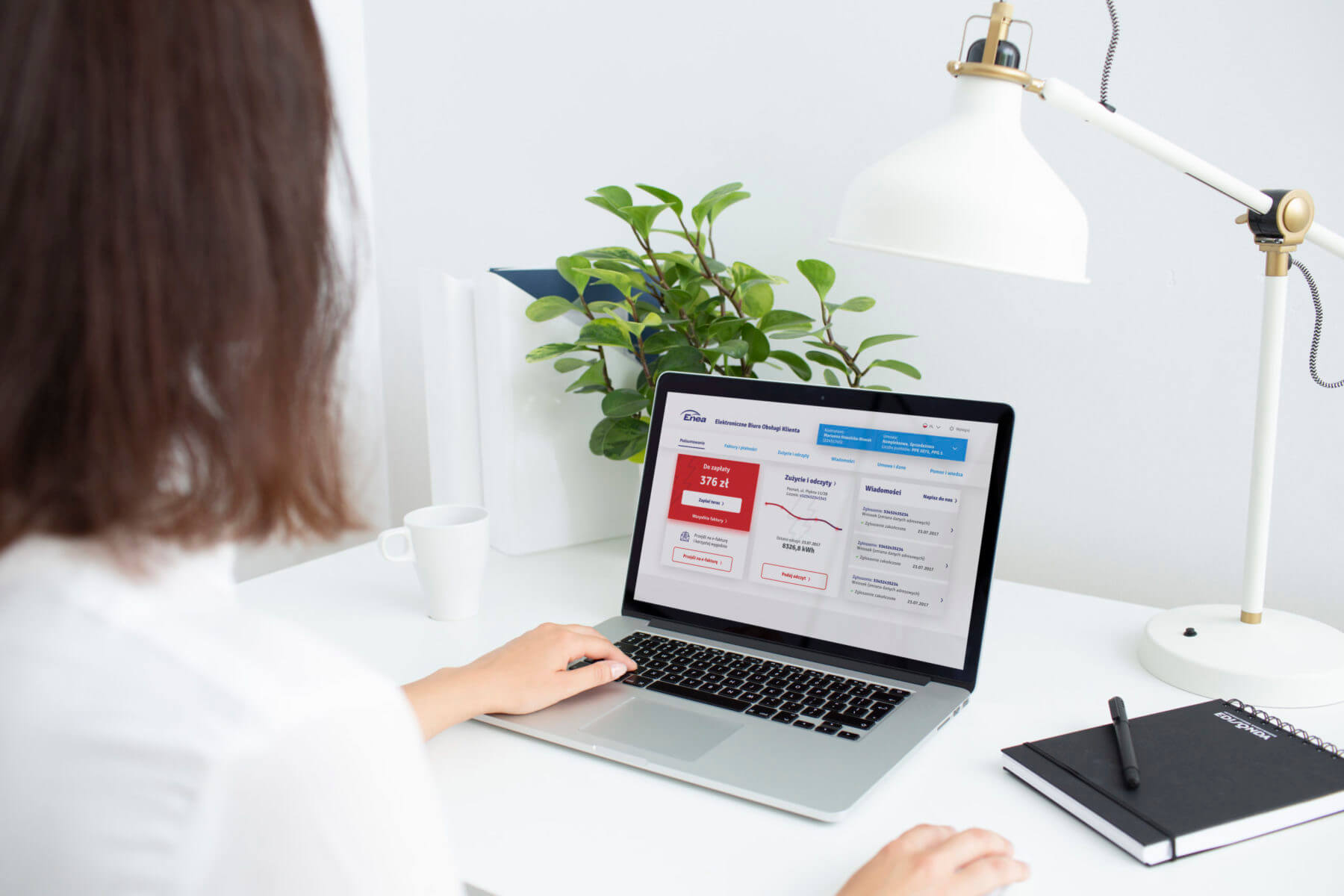According to Microsoft research, today’s customers expect a comprehensive service across multiple channels. 59% have used 3 or more channels in a year. Two-thirds of customers prefer to solve problems themselves first. As many as 88% expect to do so online. So what is Electronic Customer Service and how do you build it?
Who is electronic customer service for?
Electronic customer service is a system that enables the communication between a company providing services or selling products and its customers. It can take the form of a website accessible via a browser or a mobile application.
Contact via electronic customer service is most often made possible by utility providers (telecommunications, electricity, gas, heat, water, internet, television). But there is nothing to prevent other entities that provide other services on a daily basis from also thinking about it – for example, cooperatives and housing communities, property developers, banks, clinics, insurance companies, etc.
Electronic customer service will also perfectly fulfill its role in the B2B sector – with distributors or companies providing services to business. For example, some time ago we had the opportunity to create this type of system for a client from the financial sector. At the time, we designed a solution for debt collection and factoring services.
Why invest in electronic customer service?
Benefits for business
Above all, you save money. On the one hand, the system allows you to automate processes that were previously carried out in a traditional office or by a Call Centre, and on the other hand, thanks to the electronic document workflow, you can streamline logistics.
Electronic customer service can also contribute to increased sales, for example through cross-selling functions, dynamic price lists, loyalty programmes, or, tailored subscription options.
Would you like to know in which companies we have supported similar processes?
Benefits for the user
They are quite obvious and in each case can be quite strong competitive advantages:
- The customer can perform a specific action without the company’s employees – for example, in B2C – check the amount of an invoice, pay it, change the mailing address, order additional services, etc., in B2B – check the upcoming deliveries, make further orders, check the terms and conditions of contracts, etc.
- The data is available in the cloud 24 hours a day – the user has access to it regardless of the device through which he or she logs on…
- …and thanks to the RWD version or a dedicated mobile application, you can also use the e-office on your phone or tablet.
- All information is in one place – the user does not have to search for it in emails, paper documents, or folders
- Differentiation of access rights facilitates contact and cooperation with different customer representatives
- Integration with other tools such as Google Calendar, Outlook, or Messenger – gives the client additional options for managing to-do tasks within the system.
Customer service is not just about the website
When preparing to design a customer portal, try to consider the entire service delivery process. The interface is only one element that the user will encounter when they log in. To ensure the best possible customer interaction with the system, you need to consider the whole spectrum of experiences that occur when contacting your organisation. Even a nice and usable website will not prevent adverse impressions that occur at other stages of the process.
An example would be excessive waiting times for a submitted complaint. Delaying a response for the statutory 30 days often results in negative comments and lost customers. If the process itself is indeed taking so long, at least ensure that customers receive feedback and are kept informed of progress.
Diagnosing problems is the first step to trying to find solutions. Much of the process can be streamlined with well-designed digital product features.
Real-life example:
A problem in most clinics is the long waiting time for patients in the queue to register. Some wait to register, others to report that they have come in for an appointment. The process could be streamlined by an online registration form that allows users to register with a doctor themselves. The notification of coming for an appointment could be improved by a mobile application that recognises on the basis of geolocalisation that the user is in the building and displays information about the surgery number.
What to keep in mind before starting work on implementing Electronic Customer Service?
Set key objectives
For some companies, it may be to reduce the number of paper invoices sent, for others it may be to ‘offload’ call centres, increase sales, or user retention. It is important that these objectives are precise and measurable. Think about which are very important and which are less important. Prioritisation will be useful in the design process.
Involve users in the process
Involving users minimises the risk of a mismatched product to their needs. You will quickly get feedback and verify your assumptions.
Involve different representatives of your organisation in the design process.
Both the identification of needs and the design itself should be a team effort, involving people from different departments and units at different stages. It is a good idea to have people who have direct contact with your audience, decision-makers, marketers, as well as designers and developers involved in the process.
How do you design an Electronic Customer Service?
Start by getting to know your company and product thoroughly
- Consider what channels the user uses, what activities they perform, and how they perform them there – e.g. can they terminate a contract over the phone?
- Analyse the existing processes that affect the user.
- Check the statistics you have collected – for example, Google Analytics or data on phone calls, and emails coming into the service desk. If the company has done any research in the past – review reports and related materials.
- Analyse and organise information about your product’s operating ecosystem. Research the capabilities and limitations of other systems with which the solution you are designing will work.
Find out what the competition is doing
Do desk research or research from behind your desk. See what competitors are offering their users, and what functionality their customer portals include. Look broadly – other industries can be a good source of inspiration. Pay attention to trends when doing so. Even if you’re only going to do a simple Electronic Customer Service, it’s worth knowing that other companies are already investing in advanced or innovative solutions in, for example, voice interfaces – like Direct Energy (the screenshot is from the supplier’s website).

You can also conduct a service safari. This is a method in which the researcher takes on the role of the customer and carries out certain activities (e.g. opening a bank account, making a purchase in an online shop). This allows you to get to know the processes and also to find out what positive and negative impressions arise at the various stages.
If you are interested in this type of research, see how we examined the returns process in 50 online shops in Poland.
Get to know your users
Find out who is using your company’s products. If you don’t try to segment and analyse their activity, you won’t know the needs you have to answer.
How do you find out? You can conduct what is known as IDI, or in-depth interviews with users. This is a scenario-based interview that allows you to find out the needs and context of product use. Ethnographic research will provide you with even more information. This is based on an interview with the user and the observation of his or her behaviour in a natural environment (e.g. at a customer service point or in a shop).
We have carried out this type of ethnographic research for Tauron in order to find out what customers’ behaviour and motivations are at a stationary customer service desk and what their attitude to electronic service is.

You can also use shadowing (here the researcher accompanies the user and observes how he or she uses the product in his or her natural environment) or focus group interviews, commonly known as focus research (a discussion of a small group of users led and supervised by a moderator).
Analyse the information
From the research, you will find out what the users’ main needs are in the context of the Electronic Customer Service you are designing. How their journey progresses from the moment they are contacted with information about this product, through registration, to dealing with a specific issue. At this stage, it is important to diagnose users’ problems, needs, and impressions at each step.
Work out a solution
Now it is time to look for solutions. A good way to do this is by brainstorming with the team involved to identify answers to the pain points identified in the previous phase. At this stage, a list of functionalities for your Electronic Customer Service should emerge. It is not worth putting limits on yourself when formulating ideas – there will be time for them later.
It may turn out that the solution to the users’ main problem will not be a complex customer portal, but a simple form that streamlines just one, most difficult process. Write down all the ideas. Even if you won’t be able to implement them all at once, they can serve as a list for the next phases of product development.
Create a prototype
You can make clickable mock-ups, in shades of grey, that simulate the look of the Electronic Customer Service, micro-interactions, and transitions between the different pages. The main advantage of mock-ups is that the person reviewing them can concentrate on the type of information, the way it is communicated, and the overall process, rather than on the appearance of the system (colours, images, or fonts used).

Test the prototype
Find out the opinions of potential customers. You can do this by organising usability tests, where the user performs specific actions on the site according to a pre-developed test scenario. If the use of your customer portal does not require specialised knowledge (for example, specific use cases in a financial application), you can do so-called guerilla testing.
To do this, go to a café or other public place to ask people for their opinion. If you have the opportunity, do several rounds of testing. Between rounds, make adjustments and see how users react to them.
Want to learn more about mock-up testing? Read the article by Małgorzata Kowalska.
Create a customer portal
You can now concentrate on producing the Electronic Customer Service. If those responsible for the technical aspects have been involved in the whole project beforehand, there should now be no feasibility issues. Involving a technology partner in the entire Electronic Customer Service design process is very important, as it helps to avoid additional costs, delays and inconsistencies between the design and the final system.
The final advice – once the system is implemented and in the hands of users – ask, research, analyse data and make changes. In short – develop the solution according to the needs of your customers.




